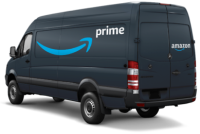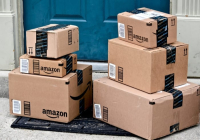
I want to second the motion. But I think it will make me (and Jeff Bezos) a ton of money.
As I write this, Amazon is valued at about 5 times sales. That’s rich for a retailer. Even Walmart and Costco aren’t worth their sales volume. But it’s super-low for a tech company.
During the first three quarters of this year Amazon had product sales of $145 billion. But it had service sales of about $115 billion. Product sales grew at an annual rate of 32%. Service sales were up 38%.
On January 14 Amazon’s market cap was about $1.58 trillion. How would the value of the pieces compare to the whole?
They wouldn’t not at first.

Next comes Amazon Web Services. This is the crown jewel. For the first three quarters it brought in $32.6 billion. It brought nearly $10 billion of that to the net income line.
Amazon is the biggest thing in the cloud. It has almost twice the market share of Microsoft, four times that of Google. It’s only 12% of Amazon’s revenue, and it’s a global business.

Finally, there’s the services business, which is everything digital that’s not AWS. This includes Prime Video, Kindle Books, and the back office operations for third party merchants. Take 32 off 115, multiply by about one-third (to bring in the fourth quarter), multiply by 11, and that’s worth another $400 billion.
I know. You’re still not at $1.58 trillion. But think about what you can do if merchandising and computing are run separately.
- Prime Video can set a price separate from shipping, and it’s now worth the $10/month they charge. Amazon Music and Kindle Unlimited are also sold by subscription. You know they own Audible, too?
- Amazon Web Services is free to go after competitors to the store.
- Amazon Alexa can fulfill its destiny as a general voice interface. It’s the next operating system after the phone. It dominates the market. Liberate it.
- AWS can become more like Microsoft and offer a full range of business applications. It might combine with Intuit (worth $100 billion) or ServiceNow (another $100 billion). It could buy smaller players and simply scale them.
- Amazon’s store and logistics operations might start sharing their wealth with shareholders, in the form of a dividend.
- Amazon could create its own payments infrastructure, like Alibaba’s Alipay or Facebook’s Diem. It could easily buy Bakkt and put all sorts of payments, from air miles to Bitcoin, into a unified payment app.
- Best of all, Amazon becomes free of the antitrust police. No more worrying about getting too big in any business. No more worrying about going into any business.

I also suspect Amazon’s current legal troubles would multiply if it tries to stay together. The store would still use the cloud, only now it would pay rent just like other customers.
So, you want to break up Amazon, B’rer Bray?
Toss me into that briar patch. Please.









